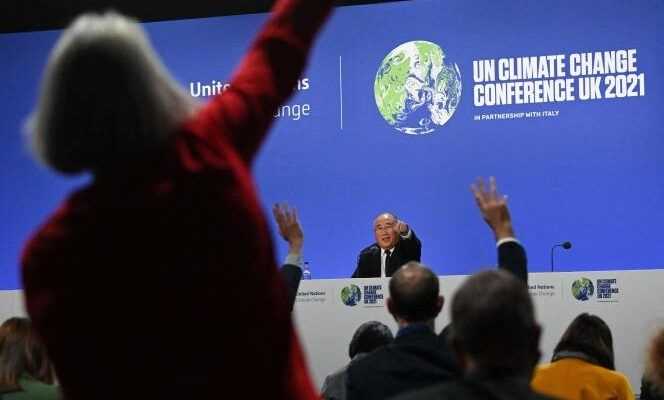Emitting twice as many greenhouse gases (GHGs) as the United States and four times as many as India, China has been able, despite very tense relations with these two countries, to get closer to each of them during the Glasgow climate conference. Caring, Wednesday, November 10, his image of great responsible world power by signing with Washington a “Joint declaration on strengthening climate action”, Beijing also fiercely defended its interests two days later alongside Delhi, in order to make the final agreement less ambitious. An ambiguity revealing the special place that China occupies on the international scene, both a developed and a developing country.
Sector by sector objectives
China arrived at COP26 with a pretty good record. Admittedly, the country is the main consumer of coal, but its almighty president, Xi Jinping, has made firm commitments: to achieve carbon neutrality in 2060 and to stop funding the development of new coal-fired power plants now. ‘foreigner. Just before the opening of the meeting, Beijing communicated to the UN its national contribution to the fight against global warming. China, which is responsible for around a quarter of global GHG emissions, now wants to peak in emissions “Before 2030” and carbon neutrality “Before 2060”. In addition, Beijing now aims to reduce the carbon intensity of its economy by “More than 65%” in 2030 compared to its 2005 level and wishes to achieve a share of carbon-free energies “About 25%” in 2030.
As a sign of its determination, the Chinese government published on October 21 a document indicating sector by sector the objectives to be achieved in order to reduce CO emissions overall.2 “Before 2030”. This includes petrochemicals, steel production, non-ferrous metals and construction materials. On November 9, several ministries (transport, agriculture, industry and technology, construction, etc.) in turn published their plan for “clean production”. Greenpeace Southeast Asia official Li Shuo noted that “Chinese commitments may not be enough but they are going in the right direction”.
a document published by the German research institute Merics shows that on certain points, Chinese commitments are more ambitious than those of the European Union or the United States. Solar and wind power capacity is expected to reach 1,200 gigawatts (GW) in China in 2030 while the United States has not published any figures and the European Union is only committed to wind (631 GW ). Likewise, renewable energies will have to provide more than 80% of energy consumption in 2060. The United States has not made any such commitment and the European Union has set itself a less ambitious objective (32% at 40%) but in the much shorter term (2030).
You have 32.13% of this article left to read. The rest is for subscribers only.
